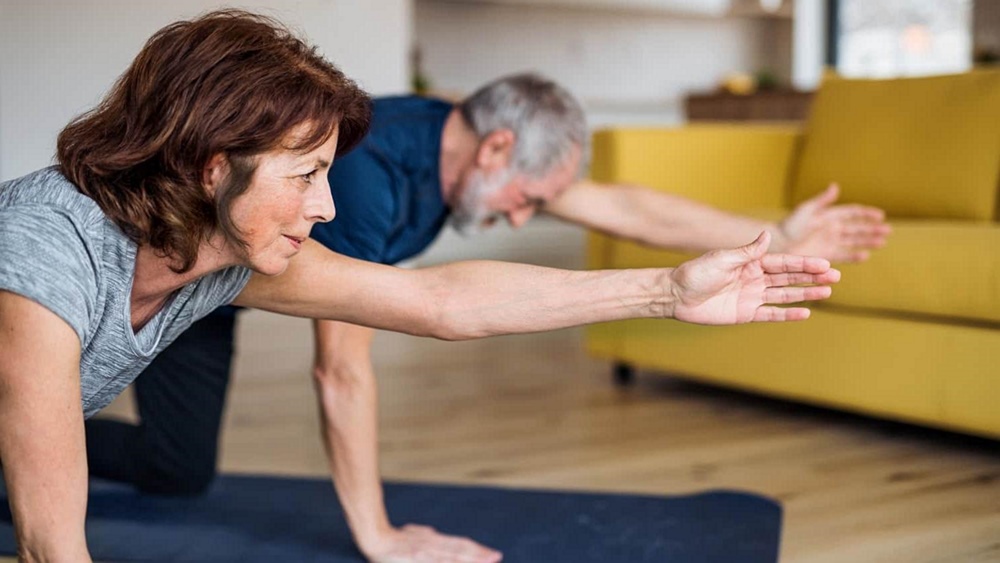Last Updated on: 18th December 2024, 09:59 am
Starting a fitness journey after 50 requires the right mindset. A positive attitude sets the tone for success, motivating you to face challenges and celebrate progress. Focus on building resilience to stay committed.
- Overcoming Mental Barriers: Identify self-doubt and address it step by step. Acknowledge fears and turn them into opportunities to grow mentally stronger.
- Setting Realistic Goals: Begin with small, achievable targets. These victories create momentum, driving you toward larger goals with confidence.
Approach this journey with determination. A balanced mindset ensures your commitment to healthier habits and lifelong fitness.
The Health Benefits of Staying Active as You Age

Staying active over 50 is essential for maintaining health. Regular exercise enhances physical, mental, and emotional well-being. The rewards go beyond fitness, improving quality of life.
- Cardiovascular Health: Regular activity strengthens your heart, lowers blood pressure, and reduces the risk of chronic diseases.
- Mobility and Balance: Strength training and stretching exercises improve coordination, reduce fall risks, and maintain independence.
- Mental Health: Physical activity releases endorphins, reducing anxiety and depression while sharpening cognitive abilities.
Every effort enhances both your longevity and vitality. Active living ensures a fuller and more rewarding life as you age.
Crafting Your Personal Fitness Plan

- Evaluate Your Fitness Level: Start with a self-assessment or consult a professional to identify your strengths and areas for growth.
- Professional Guidance: Consult a doctor or fitness expert for personalized advice to ensure the safety and effectiveness of your plan.
- Choose Enjoyable Activities: To stay consistent, select exercises you love, such as yoga, swimming, or cycling.
- Variety in Workouts: Include cardio, strength, flexibility, and balance exercises to cover all aspects of fitness.
A thoughtful fitness plan tailored to your goals sets the foundation for success. Start small, adjust as needed, and stay consistent for lasting results.
Nutrition and Hydration: Fueling Your Body for Success

- Importance of Nutrition: A balanced diet of protein, healthy fats, and carbohydrates supports energy and recovery.
- Hydration Basics: Drink at least eight glasses of water daily. Increase this amount during exercise to stay hydrated.
- Supplements: Use vitamins or minerals when needed, but consult a professional before starting.
Fuel your body with care. A balanced diet and proper hydration complement your workouts, maximizing performance and recovery.
Overcoming Common Challenges and Staying Motivated

Fitness journeys often come with obstacles. Learn to adapt and stay on track. Flexibility in your approach ensures progress even during setbacks.
- Overcoming Plateaus: Change your routine or add variety to keep progressing.
- Finding Motivation: Join a fitness group or find a workout partner for encouragement.
- Celebrate Achievements: Acknowledge milestones, no matter how small. Each step forward matters.
Face challenges with resilience. A supportive environment and clear goals keep you focused and inspired.
Integrating Fitness into Your Daily Routine

Incorporating fitness into daily life is easier than you think. Make small, practical changes to your routine for lasting benefits:
- Walk instead of driving short distances.
- Take the stairs whenever possible.
- Turn chores into opportunities for physical activity.
Consistency transforms these habits into long-term improvements. Simple adjustments can lead to significant results.
Resources and Support for Your Fitness Journey

Finding the Right Programs
Choose fitness classes designed for older adults. Look for strength, flexibility, and cardiovascular programs tailored to your needs.
Using Technology
Leverage apps and trackers to monitor progress. Tools like Fitbit and MyFitnessPal make tracking goals easy and fun.
Building Community Connections
Join local fitness groups or activities. These connections keep you motivated and engaged, turning exercise into a social event. Support and resources enrich your fitness experience. Make use of technology and community for a fulfilling journey.
In Closing
Starting your fitness journey after 50 is no small feat. You will have to battle a body unused to exercise and face years of entrenched life choices of sedentary behavior. Your body will not respond as well as a 20-year-old embarking on the same journey. But the importance for you is even higher for them. Increasing fitness and improving your BMI will increase your quality of life in a few weeks, months, and into your twilight years. A stronger heart, bones, muscles, and mind awaits you

